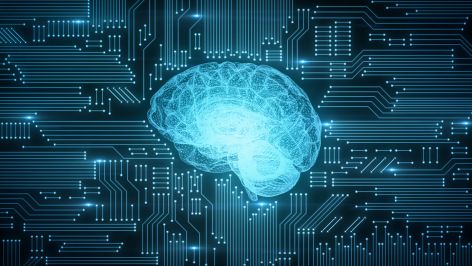Life is not some simple mechanism that can be explained by blind evolutionary chance. Complex organisms give clear evidence of intelligent design.

Intelligent design examples
We live in an absolutely amazing, beautiful world. The earth is filled with complex creatures, and mankind still has much to learn about how the earth functions. Is the unbelievably complex creation that we see around us simply an accident? Can chance events explain everything?
The intelligent design movement proposes that all this complexity is evidence of an intelligent designer.
When Charles Darwin published his book on the origin of the species in 1859, scientists did not understand how truly complex life really is. It was assumed by many until the late 1800s that life spontaneously came about by itself. But chemist and biologist Louis Pasteur, who founded the science of microbiology, finally proved that even simple life-forms came only from previously living things of the same kind. Still, scientists of the 1800s were only beginning to understand how complex life is.
The unbelievably complex human brain
The human brain is one of the greatest creations in the universe! NewScientist.com reported: “This jelly-like mass of tissue, weighing in at around 1.4 kilograms, contains a staggering one hundred billion nerve cells, or neurons.
“The complexity of the connectivity between these cells is mind-boggling. Each neuron can make contact with thousands or even tens of thousands of others, via tiny structures called synapses. Our brains form a million new connections for every second of our lives. The pattern and strength of the connections is constantly changing and no two brains are alike.”
When God created life, He made creatures so complex that we still have yet to discover all the details of how they work. Think about all the memories and events that you have experienced in your life. Imagine how much information must be preserved in your brain in order to reproduce a picture of what happened in the past! Yet we generally take these things for granted because they are so common.
Recently computers have been used to simulate the way the human brain works with the eye.
ScienceDaily.com reported on one such experiment: “PetaVision [running on the Roadrunner supercomputer] models the human visual system—mimicking more than 1 billion visual neurons and trillions of synapses. Neurons are nerve cells that process information in the brain. Neurons communicate with each other using synaptic connections, analogous to what transistors are in modern computer chips. Synapses store memories and play a vital role in learning.”
Our brains far exceed the greatest supercomputers.
What amazing complexity is necessary just for us to be able to see! Our brains far exceed the greatest supercomputers. In fact, a CNET news headline said: “Human Brain Has More Switches Than All Computers on Earth.”
The article continued: “A typical, healthy one [brain] houses some 200 billion nerve cells, which are connected to one another via hundreds of trillions of synapses. Each synapse functions like a microprocessor, and tens of thousands of them can connect a single neuron to other nerve cells. In the cerebral cortex alone, there are roughly 125 trillion synapses, which is about how many stars fill 1,500 Milky Way galaxies. …
“[Researchers at the Stanford University School of Medicine] found that the brain’s complexity is beyond anything they’d imagined, almost to the point of being beyond belief, says Stephen Smith, a professor of molecular and cellular physiology and senior author of the paper describing the study.”
Without excuse
The more we discover about life, the more incredible and complex we find it to be. The apostle Paul was certainly correct when he stated in Romans 1:20: “For since the creation of the world His invisible attributes are clearly seen, being understood by the things that are made, even His eternal power and Godhead, so that they are without excuse.”
Why did the apostle Paul write that people were without excuse—that everyone should know there is a God? If we see something that is intricately designed, we automatically assume someone made it. For example: What if someone found a car in the strata of the earth? Would anyone claim that this “evolved” by itself or was created by a random process?
When we find a complex item such as a computer, we logically conclude that someone made it. If astronauts were sent to Mars and found a computer there, everyone would assume that computer was designed. Yet when we find unbelievably complex mechanisms in living cells, many scientists assume that a “random” process of natural selection somehow produced this complexity.
Irreducible complexity implies intelligent design
Complexity implies intelligent design! The Bible states that God’s ability to create and manipulate the universe is far beyond our human capabilities.
Romans 11:33 says, “Oh, the depth of the riches both of the wisdom and knowledge of God! How unsearchable are His judgments and His ways past finding out!”
God is the ultimate designer. Even the simple creatures like bacteria are extremely complex, and humans have not even gotten close to creating a “simple” living thing today.
And many elements of the natural world display irreducible complexity—every aspect has to work perfectly the first time to have any benefit. Read more about this in our article “Irreducible Complexity: Challenge to Evolution.”
Metamorphosis displays intelligent design
Let’s consider a common but incredibly complex creature that we often see in summer.
The butterfly starts out as an egg, then develops into a larva. It then becomes a pupa (chrysalis) and ultimately turns into a beautiful butterfly. In order to change from a creature that simply crawls on leaves into a flying creature that can migrate for thousands of miles, the butterfly must completely destroy itself. It then must take the parts that are contained in the chrysalis and reorganize them into a flying machine.
Have you ever tried to put together something that came with instructions—or, even harder, without instructions? What about trying to put together a computer starting with the very basic components like memory chips?
Imagine how much more complicated it would be to put together a butterfly! One video (Metamorphosis by Illustra Media) gives the analogy of taking a Model T car, disassembling it in a garage and then reorganizing its parts to make a small airplane. Imagine how much engineering and design would have to go into that project! Yet this wonderful metamorphosis occurs millions of times each year.
Probability of evolution: terrible odds
Let’s look at a small example of the math involved in the chance creation of life. Proteins perform very important functions in all life-forms. Our skin is made up of a protein called collagen.
Michael Behe explains: “The typical cell contains thousands and thousands of different kinds of proteins to perform the many tasks of life. … Proteins are made by chemically hooking together amino acids into a chain. A protein chain typically has anywhere from about fifty to one thousand amino acid links” (Darwin’s Black Box, p. 52).
Even though we are very complex beings now, our future potential is even greater.
Of course, just like any complex machine, these chains must be organized precisely in order to function correctly. What are the chances of getting a thousand amino acids to link precisely in the proper location to produce just one protein—let alone the production of the myriads of proteins found in living things?
As a comparison, let’s consider the mathematical possibility of a million monkeys randomly typing on a million typewriters at the combined rate of a million keystrokes per second.
Jonathan Wells in his book The Design of Life explains that even after typing for a million years, there is only a 50-50 chance of them typing Shakespeare’s statement in Hamlet “To be, or not to be” (p. 178).
If it is almost impossible to type just six short words randomly, what are the chances of getting thousands of amino acids organized into exactly the right order? Michael Denton, in his book Evolution: A Theory in Crisis, explains, “To get a cell by chance would require at least one hundred functional proteins to appear simultaneously in one place” (p. 323).
The chances of a life-form spontaneously appearing are beyond the bounds of comprehension of rational thinking!
Why did God create us?
The complexity of life gives powerful evidence that living things were designed and created by a being with much greater intellect than humans have. We have not even come close to designing the unbelievably complex “machines” that we find in the natural world.
What does this mean for you? The implications of design and complexity are very profound. If we are designed by a Creator, there must be a purpose for that design! Why did God create us?
Even though we are very complex beings now, our future potential is even greater. Read about the incredible purpose for your life in the article “Purpose of Life.” It shows that this mystery can be solved by studying our Designer’s instruction manual, the Holy Bible. Be sure to continue the quest to understand and fulfill your purpose!
For more, study the articles in this section: “Is There a God?”





